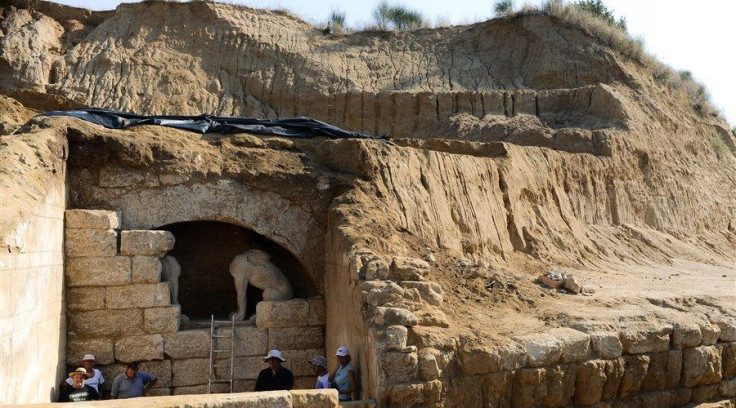Is Amphipolis tomb a shrine to Alexander the Great's best friend, Hephaestion?

A monogram of the general and nobleman Hephaestion discovered at an ancient tomb in the ancient city of Amphipolis, in northern Greece, could finally put to rest the question of who the burial chamber was built for. Hephaestion was Alexander the Great's closest friend and grew up with the Ancient Greek ruler and remained friends until the king died of illness in 323BC.
The site was discovered in 2012, but archaeologists have been unable to pinpoint why it was built. However, the monogram could shed light on its origins. Alexander was so grief-striken when Hephaestion died that he ordered shrines to be built all around the country. It remains to be seen whether the king's right-hand man is buried there, or if this is simply a shrine to him.
The remains of a woman, two men, and a child, along with various animals, were found inside. The discovery of a female originally suggested to archaeologists that it could have been Alexander's mother. Katerina Peristeri, one of the archaeologists who was working on the site, is quoted by the Daily Mail as saying: "We surmise it was a funerary heroon (hero worship shrine) dedicated to Hephaestion. I do not know if he is buried inside."
She added that the team found three inscriptions with the word "parelavon" – which translates as received – along with the monogram of Hephaestion inside the structure which was built sometime between 325 and 300BC, around the time of the general's death.
Amphipolis was an important city of the Macedonian kingdom, ruled by Alexander the Great. During his life, he built an empire that stretched from Greece to India. He died in Babylon at the age of 32 – some believe he was poisoned and others say he had malaria or typhoid fever. His body was laid in a gold sarcophagus filled with honey.
© Copyright IBTimes 2025. All rights reserved.






















